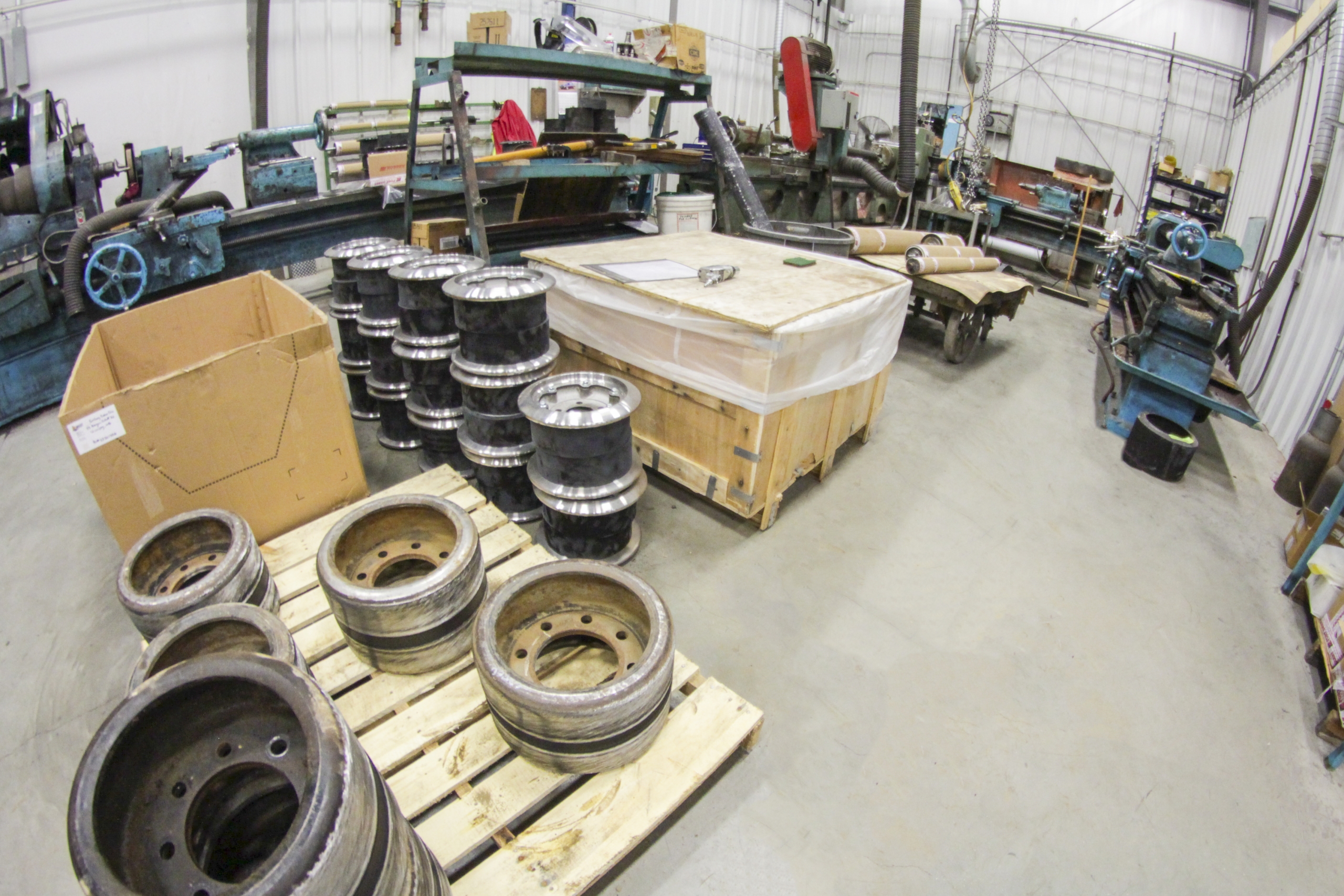

Rubber Division
Our Manufacturing
Process
The Rubber Division is an example of the craftsmanship that has grown with the company. Besides custom-designed steel and rubber moulded products, Rubber Division remanufactures mid-rollers and wheels for track combine harvesters in the agricultural industry. It also performs work for the mining and printing industries including installing rubber liners in tanks and remanufacturing press rollers.
ROLL PRODUCTS
Quality recovered rollers manufactured to precise and exacting specifications. Rubber Division is a supplier you can depend on, offering you a quick turnaround and the confidence our products will always be of the highest standards available in the industry.
MATERIALS
All of our compounds are custom milled to equal the performance of O.E. rollers. The most common applications of some of the compounds we stock are shown below. Because of this wide variety, we are capable of recovering almost any type of roller in the Printing and Allied Industries.
* The LHB/Nitrile is proving itself to be a superior compound. Its resistance to heat buildup presents a roller which is more dimensionally stable, and maintains its durometer reading longer, thus increasing the life of the roller.
INSPECTION
- Journal inspection is performed prior to commencing any work, to detect damaged journals. If damage is found, repairs are executed to ensure quality rollers.
- Detailed visual inspections of the surface, diameter measurements, and durometer readings are all taken to determine possible regrinds.
- A T.I.R. (Total Indicated Runout) check is performed to ensure the trueness of the journals once any roller regrinds are complete. Maximum allowed .002″
- The finished diameter is measured to ensure straightness. The maximum allowable taper is .002″.
- We measure the face length to ensure the correct transfer surface.
- Magnified visual inspections of the surface ensure a smooth and flaw-free surface, and a final durometer reading is conducted to ensure proper hardness.
STANDARD DELIVERY
CRISIS DELIVERY
For when those “accidents” happen, Rubber Division offers emergency service. Rolls are completed within 3 working days upon receipt and are limited to a maximum of three rollers. This service affords you a minimum of downtime. Along with the standard and Crisis deliveries, Fort Garry Rubber will coordinate deliveries to coincide with shutdowns.
LINED PRODUCTS
SURFACE PREPARATION
Rubber Division grit blasts all surfaces which are to be lined as per ASTM D3486, SSPC-SP5, white metal blast. The purpose is two-fold. First, to remove all scale, rust, and foreign surface contaminants, and second, to produce a surface profile for the interlocking action of the adhesive system.
ADHESIVE AND LINEAR APPLICATIONS
Rubber Division follows all procedures as recommended by the liner manufacturer. The adhesives are applied as quickly as possible after the grit blasting is completed. Adhesives are applied by either brush or roller. Once the adhesives are dried, the lining material is applied as per the recommended procedure. The size and number of panels are determined by the applicator.
VULCANIZATION
Steam is required to vulcanize most rubber linings in order to produce the required physical and chemical properties and to ensure proper adhesion to the metal. Rubber Division uses three methods of vulcanization as recommended by the liner manufacturer.
INSPECTION
Rubber Division encourages all customers to maintain ongoing inspection procedures whenever possible. However, as this is not always possible, Rubber Division has an inspection process in place to ensure all standards and recommended practices are followed. The most critical inspections occur before vulcanization and after vulcanization. All surfaces are visually inspected for blisters (trapped air), pulls, lifted seams, or surface defects. Finally, a high potential spark-tester is used to conduct a 100% spark-test of the surface to locate any possible pinhole leaks.
REPAIRS
Repairs work to remedy a defect that is performed after vulcanization and requires the application of sheet stock to fully cured or vulcanized stock. Any application of a layer of uncured stock to the uncured liner, before vulcanization, is recognized as a homogeneous area after vulcanization and is defined as an overlay. Rubber Division employs several methods of repair, and the method is usually determined by the extent of the repair required.